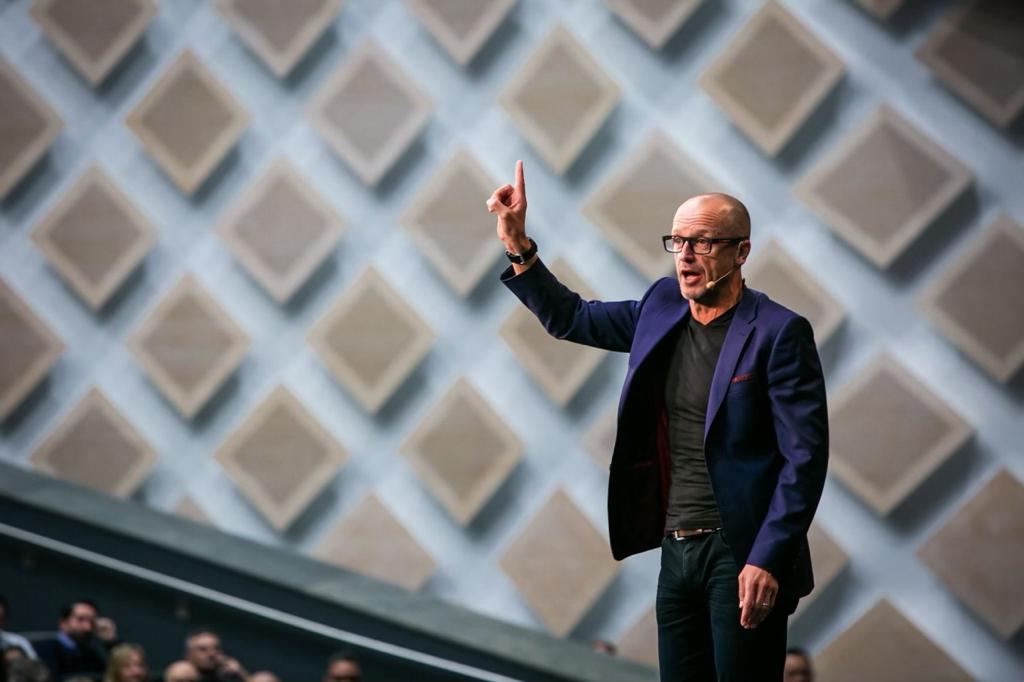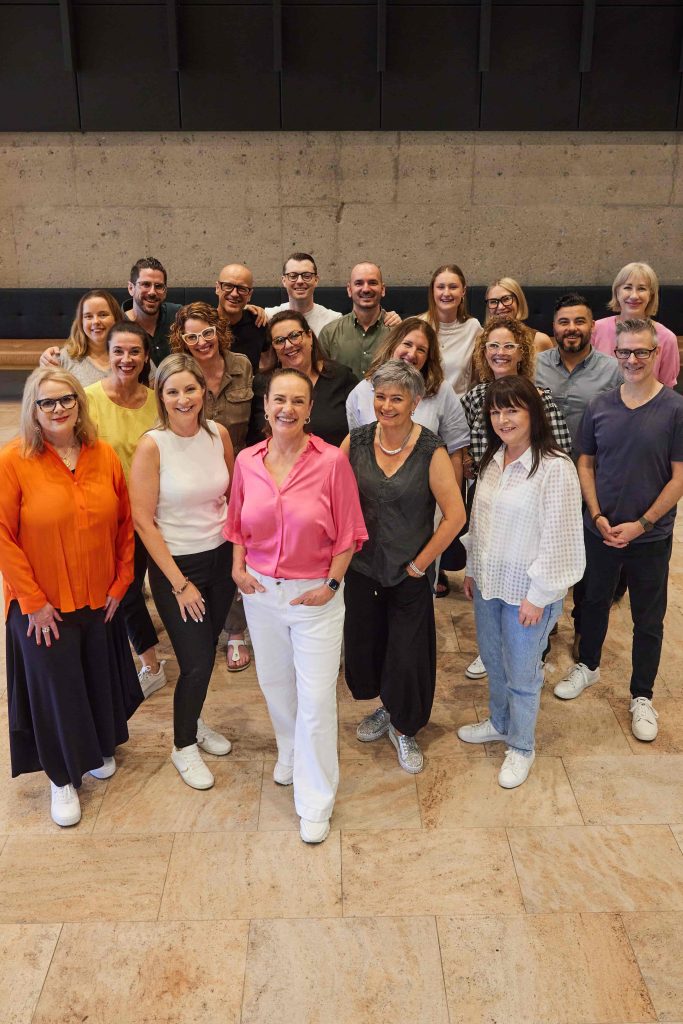It takes courage to ask what kind of culture your organisation really has. Because if the answer reveals something confronting, it means taking action. And that’s where many leaders can hesitate. But as Phuel co-owner and facilitator Jo Pollard states, this moment can be a turning point:
‘The courage to ask the question is something that can make a huge difference, creating a shift that delivers a massive outcome.’
The Phuel Conversations podcast recently hosted a powerful conversation between Karl Treacher, CEO of the Culture Institute of Australia, and Jo. Titled Culture Code: Cracking the Secret to Thriving Workplaces, Karl and Jo took a deep dive into the importance of cultural change within strategic organisations.
The phrase ‘cultural change’ is one we’re all likely to nod our heads along to when we hear it, but are we truly aware of what it means and its significant impact on our organisations’ likelihood of success?
Workplace culture, as defined by Karl, ‘is a set of shared beliefs, patterns and behaviours that govern the way a group operates, often unconsciously’. It’s not just about the way things are done in the workplace, but also about how people feel, relate and respond when nobody’s watching. At its best, workplace culture can create a sense of belonging, optimism and psychological safety – crucial ingredients for supportive and productive workplace environments.
Cultural change, then, is about the intentional shift of those shared patterns and assumptions to create conditions where individuals can thrive and organisations can perform at their best. It’s about moving from default behaviours to designed behaviours that align leadership, values and strategy to unlock cohesion and high performance across the team.
With complex and growing pressures facing each organisation in today’s business landscape, transforming culture has never been more important.
Recognising When Cultural Change Is Needed
For some organisations, the cracks are easy to spot: high turnover, disengaged teams, performance metrics slipping. For others, the signals are less obvious. Trust can quietly begin to erode. People are less likely to step up. Employee wellbeing becomes less prioritised in the face of looming deadlines.
Recognising problems when they’re already taking root is challenging. That’s why being proactive is so important for leaders who are serious about building a positive and lasting company culture. By learning to spot the subtle signs of cultural misalignment early on, leaders can take active steps fuelled by clarity and purpose.
There’s also a high chance that employees themselves are more likely to spot these cultural disruptions long before CEOs do, with an Australian HR Institute report discovering that it’s common for CEOs to fail to see cultural flaws that are ‘glaringly apparent to employees at lower levels’.
Key Indicators of a Misaligned Culture
The key indicators of a misaligned culture are often more visible in the rearview mirror than on the horizon. These can include:
- low levels of psychological safety experienced by employees
- a lack of contribution within collaborative meeting environments
- problems with retention, leading to high employee turnover rates
- dissatisfied customers experiencing the flow-on effect of gaps in company workplace culture
- a sense of dissonance between stated company values and lived company actions.
How to Diagnose Your Current Organisational Culture
If you’re looking to diagnose the current state of your organisation’s culture before stepping into actually transforming culture, it’s important to be truly open to what you may discover.
‘There’s a reluctance to examine culture,’ shares Karl. ‘Engagement surveys are a static investigation every year that boards require. Culture is the largest driver of engagement. So why are we looking at the chassis of the vehicle, not the engine?’
Jo has her own view on how responsible leaders can engage with the diagnosis of company culture.
‘One of the smartest questions leaders can ask is: What culture do we really have? What culture do we actually need? And if there’s a gap, what do we need to do about it? And really importantly, what’s my responsibility in my role? The impact of leaders is so huge, so I think that as a starting point is crucial.’
Building Blocks of Effective Cultural Change
With a clear understanding of where your organisation’s culture currently sits and where it needs to be, it’s time to turn our attention to the building blocks of effective cultural change. Lasting cultural shift? It doesn’t happen by accident. It’s only when these foundational elements are in place that genuinely meaningful (and sustainable) cultural change can take place.
Clarifying Core Values and Brand Purpose
Do each of your team members truly know what your company stands for, what its core values are, and its brand purpose?
For culture to be effective, it must be anchored in clearly defined values that deliver on the brand promise. This is recognised in consumer patterns, too, with Australian consumers seeking to engage with brands that align with authentic and shared values.
Leading with Integrity and Transparent Communication
There’s good news for authentic leaders. As Karl explains, ‘leadership is the highest index component of culture, which means your leader is the thing that actually dictates culture.’
Yes, policies and programs matter, but it’s leadership behaviour that sets the most compelling tone for cultural change.
For any organisation seeking cultural transformation, integrity and transparent communication from their leadership are non-negotiables. In fact, leadership integrity is so important to organisational outcomes that the Australian Government has built an Integrity Good Practice Guide for its own departments, with initiatives that emphasise integrity culture ‘rather than pure compliance with integrity obligations’.
7 Actions for Driving Cultural Change
You’re at the starting line of a significant organisational shift. The need for cultural change is clear. The commitment to realising it is in place. How, then, does cultural change move from an ambitious idea to a grounded reality?
These 7 actions provide a tangible way forward for authentic and proactive leaders in achieving this impact.
Assess Your Current Culture Landscape
First things first: we need to know what we’re working with before the cultural transformation work truly begins. Through using robust diagnostics that aren’t afraid to ask the hard questions within a supportive and safe environment, it’s crucial to assess the beliefs, behaviours and assumptions that currently drive your workplace culture. It’s especially important to look for even the smallest of gaps between stated values and real daily experiences across employees and leadership alike.
Define the Desired Cultural Shift
Next, it’s time to turn the lens towards defining the desired cultural shift. Specificity is king here, leading to detailed and clearly defined measures of success across the kind of culture needed to achieve organisational goals, including the identification of behaviours that need to be introduced and those that need to hit the road for good.
Secure Leadership Commitment
Without tenacious leadership commitment, cultural change strategies are set up for failure from the beginning. This isn’t a responsibility that can be delegated – it’s the leader who must own the vision, lead by example and champion the value of this transformation at every level of the organisation.
Focus on Key Behavioural Changes
The key to lasting change? Consistency in behaviour. By identifying the key behavioural changes that will take cultural change from a ‘nice to have’ to a living, breathing reality, powerful leaders can set their team up for consistent behavioural success.
Embed Cultural Change in Daily Operations
This is where the small details have the power to spark big, meaningful change in the journey toward cultural transformation. From an employee’s first taste of the organisation in an onboarding experience, through to how internal communications are prioritised and streamlined, all the way through to decision-making processes and performance reviews, cultural change cannot be overlaid on an organisation’s operating systems. It must be built into their foundation.
Communicate Clearly and Consistently
The power of clear, consistent communication can’t be overstated. Think of it like the glue that holds any kind of cultural change together, binding intent to action and idea to outcome. When employees can trust their leaders to communicate proactively and transparently, that trust can be converted into fuel for the changes to come.
Reinforce and Sustain the Transformation
Long-term change doesn’t happen in a vacuum: it requires strategic reinforcement. The period that follows a season of intense cultural change isn’t the time to sit back and coast. By continuing to monitor progress and reward ongoing alignment within your team, cultural change strategies can be revisited, refined and iterative in their returning value.
Measuring the Impact of Cultural Change
When all is said and done, how can the impact of cultural change within an organisation truly be measured? By turning to both qualitative and quantitative indicators, leaders can gain true insights not just into how their teams are feeling and relating to their workplace experience, but also to how they’re performing in the change’s wake.
Tracking Employee and Customer Sentiment
Thankfully, this tracking system doesn’t need to be designed from the ground up. The Australian Bureau of Statistics has developed tools that measure both culture and climate, going a long way to understanding the gap between actual and desired organisational culture.
Paying close attention to employee sentiment, while also building ongoing tracking strategies across customer sentiment, can continue to inform leaders when it comes to measuring the impact of cultural change.
Adapting Based on Feedback and Outcomes
Workplace dynamics are complex, living creatures – and innovative leaders must be ready to adapt based on real feedback and data-driven outcomes.
Cultural change isn’t a finish line. It’s an ongoing process. Rather than seeing it as a one-time shift, it’s about building a system of constant adaptation, one that uses feedback loops to adjust strategy, address areas of resistance and keep momentum alive. This approach helps your culture to remain resilient and accountable, as well as ready in the face of change.
Embedding Cultural Change for the Future
From employee wellbeing to customer experience and long-term organisational performance, culture is the heartbeat that connects strategy to action and allows values to be lived out through behaviour. By taking a unified ‘one culture’ approach, leaders can empower their team to move with clarity and consistency towards shared organisational goals, fuelled by a deep understanding of genuine organisational values.
This cultural change, however, isn’t a one-time-only transformation. By continuously and strategically investing in ongoing cultural change, the results can’t be beaten: a stronger team, a firmly rooted brand and workplaces that break free from cycles of dysfunction.
If workplace culture has been at risk of being an afterthought, rather than a priority, learning how to implement and maintain cultural change can transform your organisation for the better. A thriving workplace, thriving employees and thriving leadership – it’s a win-win.





